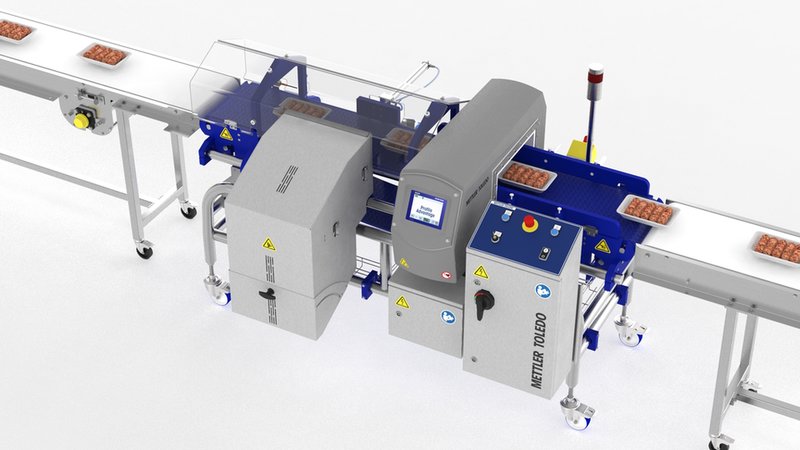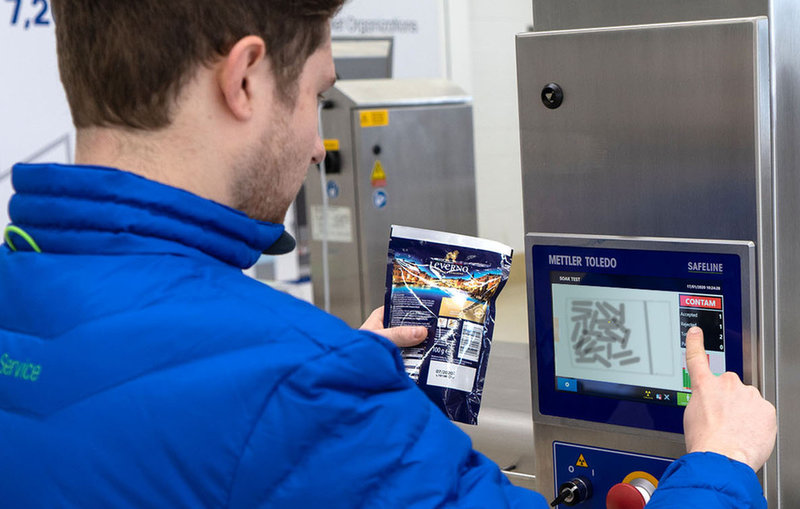Company Insight
Sponsored by Mettler Toledo
The Fight for Food Safety – Metal Detection or X-ray?
Physical contaminants in food are a global safety concern shared by small to large manufacturers, influenced by market trends, and preventable with the right inspection technology.
Image: copyright
I
f fragments of metal, bone, plastic, glass or any other foreign body enter the food chain, they could cause serious harm. But there's more to it than consumer protection alone. Product recalls caused by physical contamination are also a considerable risk to brand reputation. Fortunately, the evolution of product inspection technologies mean that most types of foreign body contamination are now detectable.
What Are The Factors That Determine Inspection Equipment?
Sensitivity
The performance of such equipment is dependent on a range of factors that impact sensitivity. These may include the size and location of the contaminant, the speed of the production line, the comparative density of the contaminant to the product being inspected, and the type of product packaging material being used.
Type of Product
The type of foodstuff is also a major factor. In many food production processes, raw and incoming materials arrive in liquid or paste form, and are pumped through pipework systems before being mixed and blended. Detecting contaminants in incoming materials early in the production process has many benefits. Liquid and paste products are often easier to inspect, and contaminants tend to be larger and easier to spot.
When it comes to detecting contamination in unpackaged bulk, loose and granular products, inspection technology – positioned over a horizontal conveyor or as the product falls under gravity conditions directly before processing or packaging – is an efficient way to remove contaminants.
Where in the Line?
Early detection protects valuable processing equipment from further damage downstream and can eliminate contaminants before additional production value has been added, minimising wastage. Final inspection of products at the end of the production line, once processing and packaging has taken place, is the last line of defence before shipping to retailers and supermarkets. In this environment, the type of packaging and the potential type of contamination dictate the type of product inspection system which should be used.
Ensuring Due Diligence
Broadly speaking, there are two mainstream physical contamination detection technologies – metal detection and x-ray inspection. The easiest means of choosing between these two technologies is to start with the application. Carry out either a Hazard Analysis and Critical Control Points (HACCP) audit or a Hazard Analysis and Risk-based Preventive Controls (HARPC) audit. A HACCP audit identifies the risks of contamination being introduced in the manufacturing process, and the types of contamination likely to be encountered. A HARPC audit also covers contamination in the manufacturing process, but will take into account additional security, such as visitor access and control. Critical Control Points (CCPs) should be established to mitigate the risks, and product inspection equipment needs to be installed at these points to reduce the risk of contamination to acceptable levels.
Choosing the Right Technology
If an audit determines that metal is the only likely contamination to be found, then a metal detector is the best solution. However, if other contaminants like glass, stone or dense plastics are identified as possible contaminants, then it is probable that x-ray is a more suitable solution. In any case, it is always advisable to conduct product testing to establish the most appropriate technology.
While metal detection and x-ray inspection offer differing capabilities, neither approach is infallible. For example, when it comes to aluminium contaminants in non-metal packaging, metal detection would be deemed the most suitable technology. Aluminium is a lightweight other metals such as ferrous and stainless steel. This causes a reduction in the sensitivity on an x-ray inspection system and means that it can only detect aluminium at twice the size of ferrous or stainless steel contaminants. In contrast, due to its good conduction properties, aluminium can be detected at smaller sizes using metal detection, which makes it the better solution. By comparison, when attempting to detect metal contaminants in aluminium foil packaging, metal detectors struggle to spot the contaminants amidst the packaging.
Outlook: Digitisation will Improve Efficiency
Digitisation is a major trend, and food manufacturers are increasingly looking to improve automation and traceability within their plants. In the event of a product recall, manufacturers and brand owners need to demonstrate that they have exercised full diligence to authorities. The most effective way to achieve this is from real-time reporting of all contamination checks. Product inspection systems now come with full data acquisition acting in support of audit compliance. This enables food manufacturers and processors to prove due diligence in their actions, taking all potential precautions to minimise contamination risks.
To learn more download the whitepaper Ensuring Food Safety: Preventing Physical Contamination in Food

